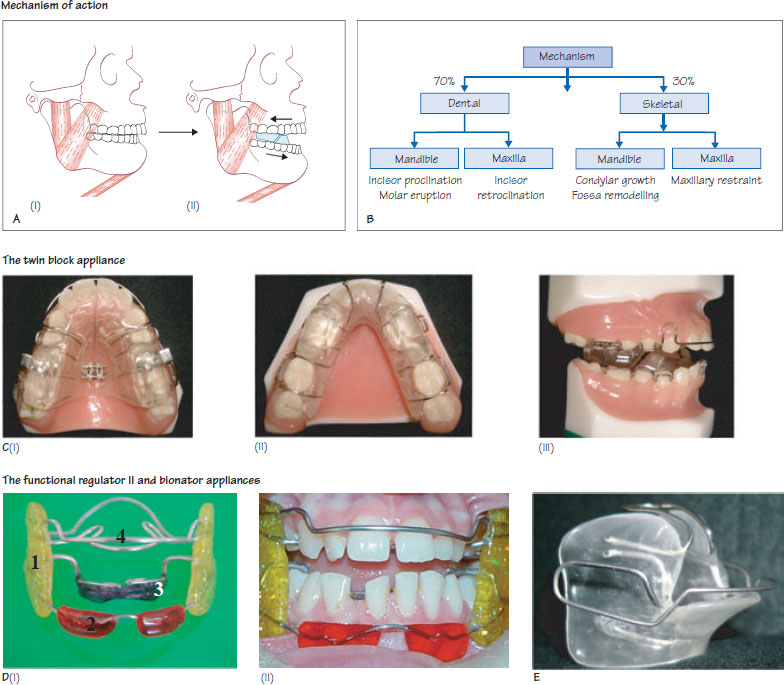39
Functional appliances
Figure 39.1 (A) Vertical and anterior posturing of the mandible results in muscular and soft tissue stretching. This produces forces which act on the dentition, through the appliance, to produce tooth movement. (B) The mechanism of action of functional appliances. (C) The twin block appliance. The (i) upper component, (ii) lower component and (iii) side view. The blocks interdigitate at 45–70° to posture the mandible forwarde (note the edge-edge incisor relationship). (D) The funtional regulator II appliance: (i) the various components: 1 = buccal shield, 2 = labial pad, 3 = lingual pad and 4 = labial bow. (ii) The functional regulartor II in situ. (E) The bionator appliance.

A functional appliance can be defined as an appliance that alters the posture of the mandible, causing stretching of the facial soft tissues, to produce a combination of dental and skeletal changes. Functional appliances are most commonly used in the management of Class II malocclusion, however, they are occasionally used in Class III malocclusion. This chapter will focus on the use of functional appliances for the treatment of Class II malocclusion.
These appliances may be classified according to whether they are tooth-borne or mucosa-borne (e.g. the functional regulator II (FRII)). Tooth-borne appliances maybe classified as passive (e.g. bionator), if they carry no active components, or active (e.g. twin block) if they carry active components such as expansion screws and/or springs.
Patient selection
The following criteria should be fulfilled to prescribe a functional appliance:
- A significant Class II skeletal discrepancy with mandibular retrognathia.
- A growing patient. Ideally, treatment should be carried out during the pubertal growth spurt (males 14 ± 2 years; females 10 ± 2 years) for maximum response. The magnitude of the skeletal response declines following this.
- A compliant patient. Functional appliances can be difficult to tolerate and patients must attend for regular appointments.
Mode of action
Functional appliances work by posturing the mandible forwards, which causes soft tissue stretching. This genera/>
Stay updated, free dental videos. Join our Telegram channel

VIDEdental - Online dental courses


